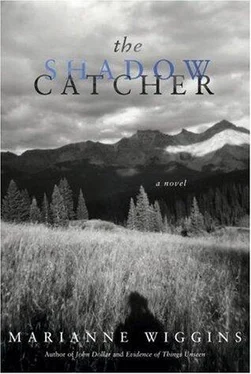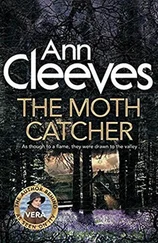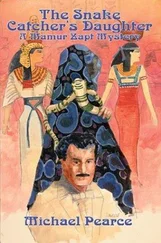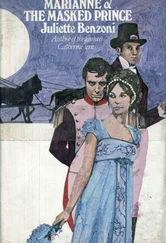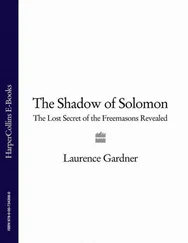Their first daughter Beth was born, followed by Florence, named for Clara’s father’s favorite city. Edward split from Guptill, moving to a new studio of his own the same year he bought their first house and even though they were more comfortable than they had ever been and his career was flourishing he could not have foreseen the skyrocketing success of Seattle in 1897 when gold was discovered in the Klondike in Alaska. When the first ship from there docked below 1st Avenue in Seattle it was said five hundred millionaires got off. Edward dispatched Asahel by boat to send back dry plates for engraving to distribute to the nation’s papers and he, himself, journeyed up along the Alaska coast by a second route. If the city had seemed a boom town in the two decades before, it now felt like the mecca that invented manna . But with it, mining mania brought concern from the nation’s new breed of conservationists, on alert for gross misappropriation of water, land and mineral rights in the wake of scandalous governmental bequests to the railroads.
Which is how, one unseasonably warm March weekend in 1898, unbeknownst to Clara, the elements that had been ready to impact on Edward’s life and change its course away from her, irrevocably, finally converged.
And they were, to put it simply: three lost men. On a mountain-top.
Dr. C. Hart Merriam, Chief of the United States Biological Survey; Dr. George Bird Grinnell, Editor of Field & Stream ; and Gifford Pinchot, Chief of the United States Division of Forestry, had lost their bearings in a sudden vicissitude of weather halfway up the face of Mt. Rainier and had become dangerously disoriented in an isolated col, separated from their camp and without supplies when their cries were answered by a dashing young adventurer in rakish hat and bold cravat who happened to be summiting that afternoon with his Premo dry plate camera.
Edward led them down to safety and, from that chance encounter, back in Seattle, found himself on the receiving end of profound and lavish gratitude from three of the most influential men he had ever met. Individually dedicated to the cause of preserving the nation’s scenic and God-given resources, the three men opened their circle of robust camaraderie to embrace Edward into their fold — especially after he had brought them all into his studio to show them his portfolio of Pacific Northwest landscapes and portraits of Puget Sound tribal people.
The three took Edward to dinner two nights in a row at the Cosmos Club, where they were lodging, and upon departing by train on the third day pledged they would maintain their bond through letters until such a time as a reunion could be planned.
Each one left with a gift of a signed Curtis print of Mt. Rainier — and in the process Edward had sold them a total of eleven other photographs, at discount, of course, but still for seven dollars each.
The evening of the day of their departure he came home unexpectedly while Clara was still sitting with the children at their supper. “What should I write to them?” he fretted. “I want to write to them before they write to me — especially that Bird Grinnell — I took to him enormously. Or do you think I ought to wait until they write to me—? What should I do? What do you think?”
“I think I’ve never seen you in this state,” she marveled. “Who thinks Father’s got a bee in Father’s bonnet?” she joked with the children. “Let’s all make a buzzing sound and show him how we’re little bees—”
“ Clara ,” he said suddenly: “This is a serious matter.”
It was only on rare occasions, anymore, that he chose to call her “Scout.”
And those were only when he was moved to thank her for compliancy. In bed, or out.
“Edward, you do not need my advice on social discourse with men . Men are charmed by you, as are women — you’re a charming person.”
“But I write stiffly, so you told me.”
“Then write to them as if in conversation. In your imagination put Bird Grinnell in front of you and simply talk .”
“Good Scout ,” he said and kissed her lightly on her head — then kissed Harold, Beth and Florence exactly the same way.
The letters paid off.
Grinnell was a friend of Edward Harriman’s, the railroad tycoon, who had just bested J.P. Morgan for control of the West Coast Union Pacific line and was under doctor’s orders to take time off from acquisitions to ease his choler and his heart. Harriman, never one to relax, consequently put together a scientific expedition to Alaska with a view to collecting samples of the fauna and documenting natural wonders. He chartered a boat, hired hunters and taxidermists and paid for twenty-three biologists, zoologists, geologists and naturalists to join him on a two-month catered jaunt into the Yukon — among them John Muir, Merriam, Pinchot, Bird Grinnell and — at Grinnell’s urging — Edward, as the official expeditionary photographer.
In preparation, Edward depleted his bank account on new cameras and equipment and a new wardrobe and borrowed several hundred dollars more to have custom leather trunks and luggage made to transport his portable laboratory.
“I will make more than a hundred times this money back,” he told Clara to counter her concerns. “ Official photographer! Everyone involved will want to buy my photographs of this experience — Harriman’s a millionaire! — and if we have to miss a payment to the bank and keep the children’s piano teacher waiting for her money, then so be it.”
“I will never keep a piano teacher waiting for her money,” Clara pledged.
And she didn’t — she found ways to economize — but still: Edward’s expectations of an economic windfall from the journey proved to be unfounded.
And a harbinger of how his expectations, his tendency toward grandiosity, would fail to deliver the anticipated “gold” at the end of those rainbows again and again. Mt. Rainier had led to Grinnell who had led to Harriman who would lead to Teddy Roosevelt — a chain of surrogate, older brothers — who would lead Edward to J.P. Morgan who would advance him seventy-five thousand dollars — a future sum the future Edward enthusiastically expected Morgan to earn back from the future sale of all those future photographs. He would squander Morgan’s money, in part, on custom clothes and custom camping gear, on Italian printing papers more exquisite and valuable than any that Da Vinci had, and he would end up signing over all his copyrights to Morgan as a consequence.
He did not foresee, in 1899, that a group of men of the caliber that Harriman had summoned would bring cameras of their own, that they would show up with what he termed “push-button apparatuses,” easily portable Kodak box cameras supplied with easy rolls of negative film, and enjoy the experience of taking spontaneous pictures, themselves, snap shots, from their own points of view. Although Harriman had ordered a private folio edition of seven hundred printings from Edward at the completion of the expedition, he never reimbursed the cost, and Edward was left scrambling to recover from the debt but also drowning in expensive prints of Inuit villages and rugged ice that no one seemed to want.
Clara tried to be supportive, but Edward couldn’t understand why anyone would prefer to have a Kodak quick-and-easy photographic record over what amounted to a lasting work of handmade art. His portraits and landscapes were “painterly,” he knew that — that was his purposeful effect, an effect he tried for over the crisper images of, say, Asahel, whose photographs were often sharp enough to slice through steak. The question of where photography was going , what it was , was the leading subject of the journals he subscribed to — the avant-garde coming from New York City and the Photo Secessionists led by a Mr. Alfred Stieglitz who propounded the theory that a photograph should be . That it should be a thing-in-and-of-itself , like a sonata or a poem, not something that appeared, self-consciously, to have been produced through the mechanics of an apparatus. The East Coast journal, overseen by Stieglitz, was called Camera Notes while the West Coast journal, to which Edward frequently contributed, was called Camera Craft —a distinction between theory on the one coast, and craft on the other, which more or less summarized the East Coast elitist view that photographers out West were not only provincial, but uninteresting to boot.
Читать дальше
